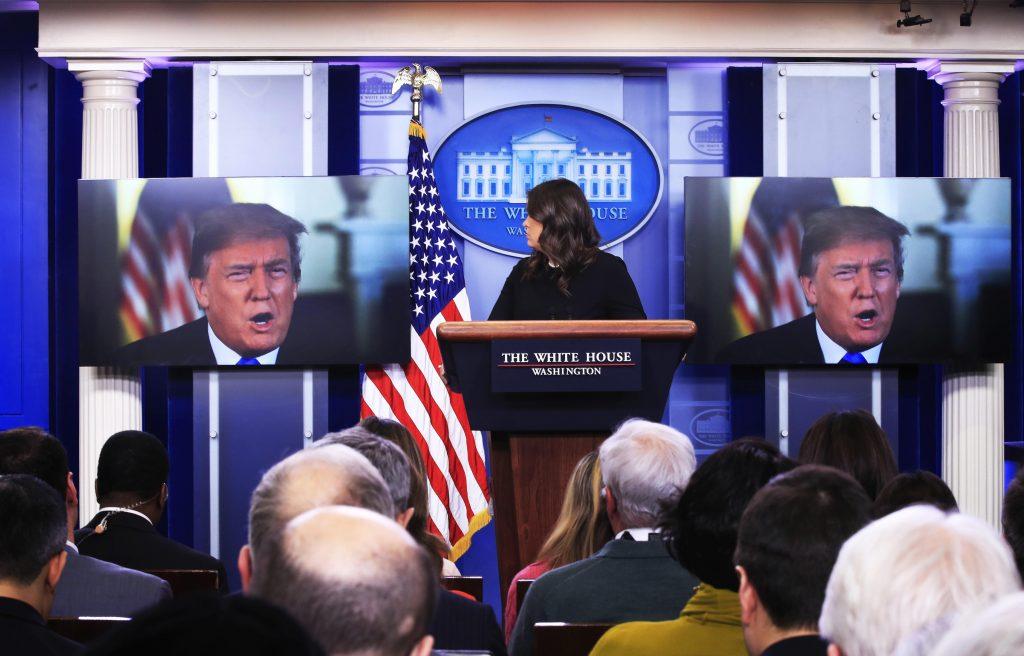Jody Powell. James Brady. Marlin Fitzwater. Dee Dee Meyers. Ari Fleisher. To name a few. All typically deft in directing media attention during the White House Press Briefing ritual toward one subject and away from others, setting the terms of journalistic conversation, while also shaping the rhetorical tenor and texture of the country’s business. Bundled into one job title, the press secretary acts as the president’s director of metaphor and plot, scriptwriter, and dramaturg. On occasion, they will exaggerate and minimize and dodge. It’s practically in the job description to redirect interest and pull on the truth like saltwater taffy. In spite of what was said, Bill Clinton really did have sex with Monica Lewinsky. In spite of what was said, Saddam Hussein really didn’t horde weapons of mass destruction.

In Sean Spicer’s briefing room, for a brief time, video cameras were banned. Suddenly, the wan, astonished faces of American journalists became invisible, or they were purposefully disappeared, as Spicer stumbled through the barbed wires of history, cutting himself badly. The journalists were still there, of course, it’s just that we couldn’t see them. There was a time when we couldn’t hear them either, when live audio coverage was also banned. Once the Press Secretary crossed this threshold into a neo-authoritarian style, our consistent rapport with the briefing room has been permanently, indefinitely disturbed. But then the dailiness was subtracted from the briefing, even when recording devices and reporting practices were allowed to resume, and the tedium, the style-without-a-style of the briefing room vanished, along with the disbelieving expressions of the reporters who worked there.
This image was rendered by hand in colored pencil by the courtroom artist William Hennessy. When members of the White House press corps learned they would not be able to cover the daily news conference with live cameras, CNN sent Hennessy to render an image of the unbroadcast briefing. Look at the figure on the far right, the one working the video camera, wearing earphones. By indicating what should be present in the scene, but isn’t, the image reminds us of the transparent representation that has been denied us. A presence as index of an absence, an irony that reveals the operation of censorship.
The image says: Here is proof that, in the very recent past, the executive branch of our government regularly honored the free exercise of an independent press with a daily briefing, in a room specifically staged for this practice, where journalists directly faced the institution of the presidency and queried it.
The image also says: Take note, I am a ruin. Not a sight bathed in the soft light of sentimental reminiscence or nostalgia. Don’t be seduced by the play of color and line and the formal balance of my composition. I am a visual record of an institution as it disappears under the pressures of an authoritarian style.
Spicer’s style had more than a touch of Pinocchio to it, too many stutters and stumbles when confronted with lies, too many cracks in the authoritarian univoice. And so exit stage right he went.
The second actor to reprise the role, so briefly you might have missed him, is one Anthony Scaramucci, who spoke in blue-streak so vivid, he might have been auditioning for the role of minor Jersey gangster on The Sopranos. Even he might have been too much for this earthy regime and so yanked off-stage he was. But before he disappeared, he coached his understudy, who proved to be a tenacious, truth-denying, belligerent antagonist to the way things used to be done.

Enter: Sarah Huckabee Sanders, all-in for the reality-defying authoritarian stylistic act: she flew through the airwaves with the greatest of ease, openly disdainful of the free press principle. Her contempt for the White House press corps, for the discipline of journalism, and for the general practice of accountability, was so acute that, by wide consensus, at least for a time, Sanders killed the genre. Hers was a slow-acting but certain poison: on her watch, the White House Press briefing became more and more seldom, until all expectation was lost: each record she broke for not holding a briefing was the record she had previously set for breaking a prior record.
From that broken point forward, Sanders kept the lights in the room turned off, encountering members of the press as strangers in the night, on an unstaged set, at unpredictable intervals, without microphones or podium, outdoors in the White House driveway. The briefing becomes known widely by reporters as “the drive-by,” an apt metaphor for a rhetorical crime scene.

